Disclosure: This article contains affiliate links. We may earn a commission from purchases at no extra cost to you, which helps our travel content.
The scent of cardamom-infused tea mingles with woodsmoke and sizzling meat as I navigate the narrow alleyways of Quetta's Liaquat Bazaar. It's my third day in Balochistan's capital, and I've already filled pages of my sketchbook with drawings of ornate copper teapots, hand-painted ceramic bowls, and the weathered faces of street vendors whose families have been preparing the same recipes for generations. As a designer obsessed with the intersection of culture and craft, I've traveled to many corners of the world, but few places have captured my senses like Quetta's street food scene—where every dish tells a story of cultural resilience, nomadic traditions, and the complex history of this frontier province. What began as a research trip for my design collective has transformed into a deeply personal exploration of how food serves as both cultural preservation and living art in this oft-misunderstood region of Pakistan.
Breakfast with the Locals: Sajji and Chai Culture
My mornings in Quetta begin before sunrise, when the city's bakeries and tea stalls flicker to life under bare bulbs and kerosene lamps. There's something magical about watching a city wake up through its breakfast rituals, and Quetta's are particularly special.
On my second morning, I found myself at Lehri Sajji House, where I watched in fascination as whole chickens were skewered on metal rods and slow-roasted over open flames. Unlike the evening version that's more familiar to tourists, breakfast sajji is served with a mountain of fresh naan and a side of green chutney that's bright enough to jolt you awake better than any espresso.
'The secret is in the timing,' whispered Karim, the third-generation owner who let me photograph his preparation process after I showed genuine interest in his craft. 'Too fast and the meat is tough, too slow and it loses its soul.'
I couldn't help but think how similar his approach was to thoughtful design—patience and precision creating something that appears deceptively simple.
The real revelation, however, was Quetta's distinctive chai culture. Forget your standard cup of tea; here, it's a complex ritual involving special clay pots, precise milk-to-tea ratios, and a communal drinking experience that breaks down social barriers. At Kharotabad Tea House, I sketched the distinctive Balochi teapots while sipping the most aromatic cardamom tea I've ever tasted, served in small glass cups that showcase its amber color.
I've documented tea cultures across four continents, and I always carry my travel tea kit to compare local brews with my own attempts, but nothing prepared me for the complexity of Balochi tea—a perfect balance of sweet, spicy, and creamy that I'm still trying to recreate at home.
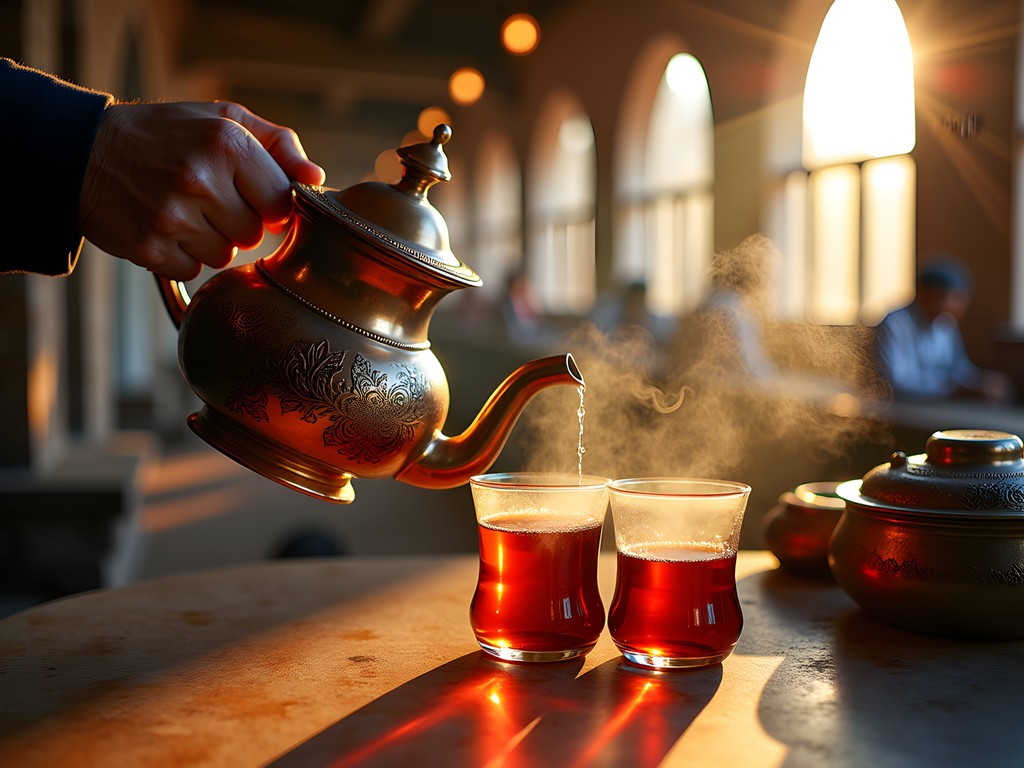
💡 Pro Tips
- Visit Lehri Sajji House before 8 AM for the freshest breakfast sajji
- Ask for 'doodh patti chai' for the authentic milk tea experience
- Look for teahouses where locals gather—they typically serve the most authentic brew
The Art of Balochi Dumba: More Than Just Meat
If there's one dish that embodies Balochistan's nomadic heritage, it's dumba—fat-tailed sheep meat that's prepared with a reverence that borders on ceremony. As someone who approaches food through the lens of design, I was captivated not just by the taste but by the entire ecosystem surrounding this regional specialty.
At Haji Ghulam's streetside stall near Jinnah Road, I spent an entire afternoon watching his methodical preparation process. The meat is marinated in a blend of spices that varies between families but always includes dried pomegranate seeds, a touch that speaks to the Persian influences in Balochi cuisine.
'My grandmother would say the sheep gives us everything—meat for strength, fat for cooking, bones for broth,' Haji told me as he expertly trimmed a cut of meat. 'Nothing is wasted.'
This philosophy of resourcefulness resonated deeply with my own approach to sustainable design. I sketched his knife techniques in my journal, noting how the specialized curved blades have evolved specifically for this preparation.
The real magic happens when the marinated meat meets the fire. Unlike other grilling traditions I've documented, Balochi dumba is cooked slowly over a specific type of wood that imparts a subtle smoky flavor without overwhelming the meat's natural taste. The fat melts gradually, self-basting the meat in a process that requires no additional oil.
The final presentation—served on handmade clay plates with minimal garnish—embodies the design principle I most admire: allowing quality materials to speak for themselves without unnecessary embellishment. Each bite tells the story of Balochistan's harsh landscape, where resourcefulness isn't trendy—it's survival.
While photographing this process, my compact travel tripod proved invaluable for capturing the low-light cooking scenes without disturbing the natural workflow of the stall.
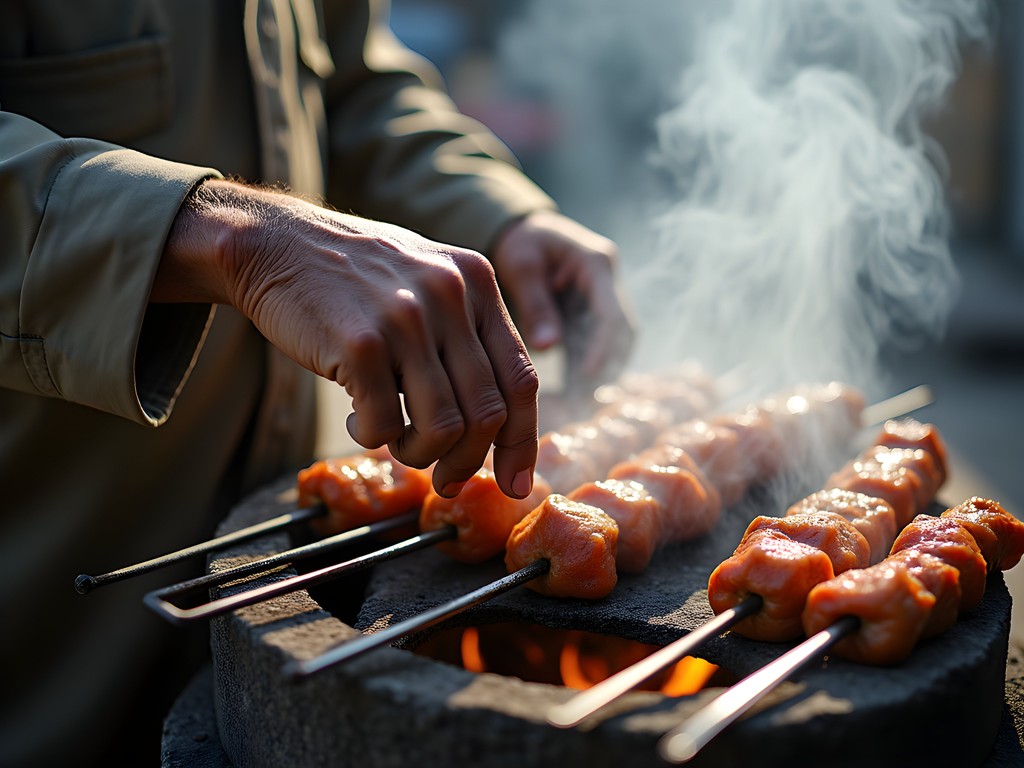
💡 Pro Tips
- Visit meat stalls in late afternoon when they're preparing for dinner service to see the full preparation process
- Always accept the accompanying bone broth if offered—it's considered the most nourishing part
- Ask permission before photographing food preparation—most vendors are proud to share their craft if approached respectfully
The Forgotten Grains: Balochistan's Ancient Flatbreads
While meat often takes center stage in conversations about Balochi cuisine, it was the region's diverse flatbreads that truly captured my designer's eye. Each variation tells a story of adaptation to harsh landscapes and nomadic necessity.
On my fourth morning in Quetta, I woke before dawn to visit a traditional tandoor bakery on the outskirts of town. The bakery itself was a masterclass in vernacular architecture—the clay ovens built partially underground to maintain consistent temperatures despite the region's dramatic daily temperature fluctuations.
'These designs haven't changed in centuries,' explained Fatima, a woman who had been baking here for over forty years. 'Why change what works?'
I watched in fascination as she slapped rounds of dough against the interior walls of the tandoor with lightning speed and precision. Each movement was economical, refined through decades of practice. The resulting kaak—a twice-baked bread with a shelf life of months—was designed for the nomadic lifestyle long before refrigeration.
What struck me most was the variety of grains used in these breads. Beyond the wheat flour familiar to Western palates, I discovered breads made from millet, barley, and local varieties of ancient grains that have become rare even in Pakistan. Each grain produces a distinctly different texture and flavor profile, with the bakers adjusting their techniques accordingly.
The most fascinating discovery was sajji naan, a bread designed specifically to complement the famous roasted meat dish. It's thicker than standard naan, with pockets designed to catch the meat juices. The surface is stamped with intricate geometric patterns using carved wooden tools that reminded me of textile printing blocks I've collected from across South Asia.
I spent hours photographing these patterns, seeing in them the same design language that appears in Balochi textiles and architecture—proof that culinary traditions never exist in isolation but are part of a region's broader cultural expression.
To document these intricate bread patterns properly, I used my macro lens attachment that clips onto my smartphone, allowing me to capture the detailed impressions and textures that make each bread unique.
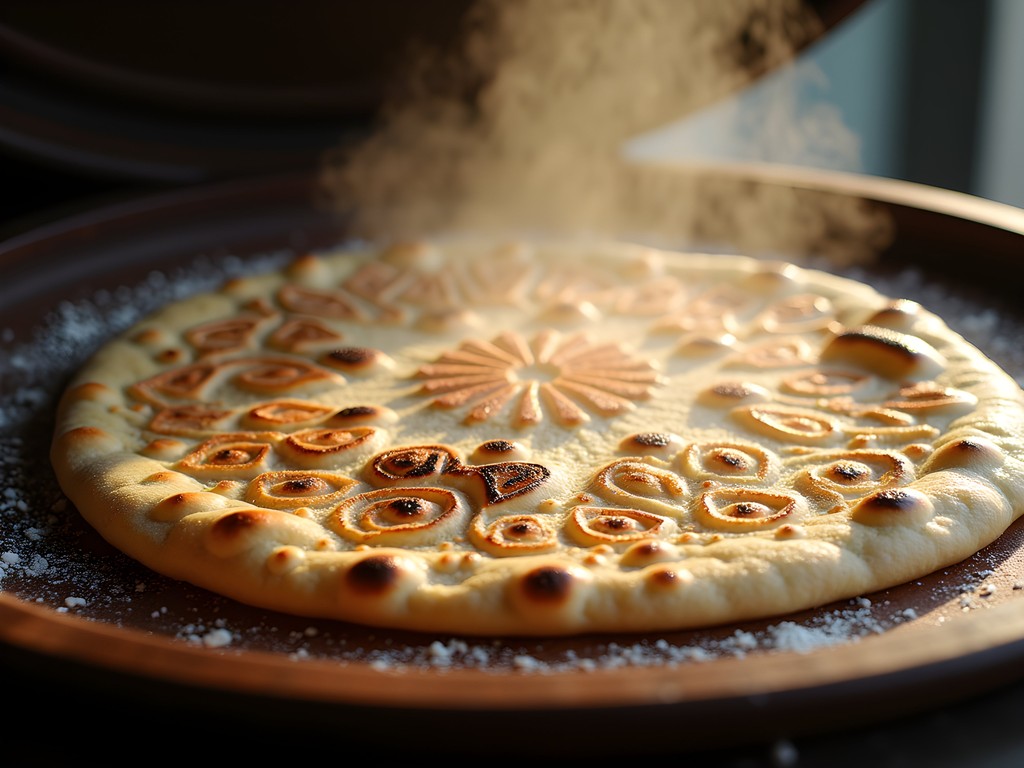
💡 Pro Tips
- Visit bakeries between 5-7 AM to see the full bread-making process
- Purchase kaak bread as a practical snack for day trips—it stays fresh for days without refrigeration
- Look for bakeries where women are working—they often maintain the most traditional techniques
Sweet Endings: The Persian-Influenced Desserts of Quetta
If you want to understand Quetta's position as a cultural crossroads, look no further than its desserts. The sweet offerings reveal layers of Persian, Central Asian, and South Asian influences that have melded over centuries of trade and migration along the ancient silk routes.
My exploration of Quetta's sweet side began at Agha Sweets on Inscomb Road, a modest shop with a reputation that extends throughout Pakistan. The display case was a riot of colors—jewel-toned jellies, golden-fried pastries dripping with syrup, and delicate confections dusted with pistachios and rose petals.
'My grandfather came from Isfahan,' shared the proprietor, Agha Hussain, referring to the famous Iranian city known for its confectionery traditions. 'He brought recipes that we've adapted using local ingredients.'
This adaptation process fascinated me. Where Persian desserts might use rose water, the Balochi versions often incorporate local wildflower essences. Saffron—still used in special occasion sweets—is supplemented with turmeric and other local colorings for everyday versions.
The most distinctive sweet I encountered was shirmal, a bread enriched with milk, saffron, and cardamom that straddles the line between bread and dessert. Traditionally served with tea, it's stamped with patterns similar to those I observed on sajji naan, demonstrating how design motifs transcend individual dishes to create a cohesive cultural language.
Another revelation was jalebi chawal—a sweet rice dish where each grain maintains its integrity while absorbing the fragrant syrup it's cooked in. The technique requires precise temperature control and constant attention, resulting in a dessert that's simultaneously simple and complex.
'Watch how it catches the light,' Agha said, holding up a spoonful. The translucent quality of the rice grains did indeed create a luminous effect that reminded me of the alabaster work I'd seen in local architecture.
I spent my final evening in Quetta sketching these desserts in my travel journal, trying to capture not just their appearance but the sensory experience they provided—the stickiness of syrup-soaked pastries, the delicate crunch of nut toppings, and the aromatic complexity that no photograph could convey.
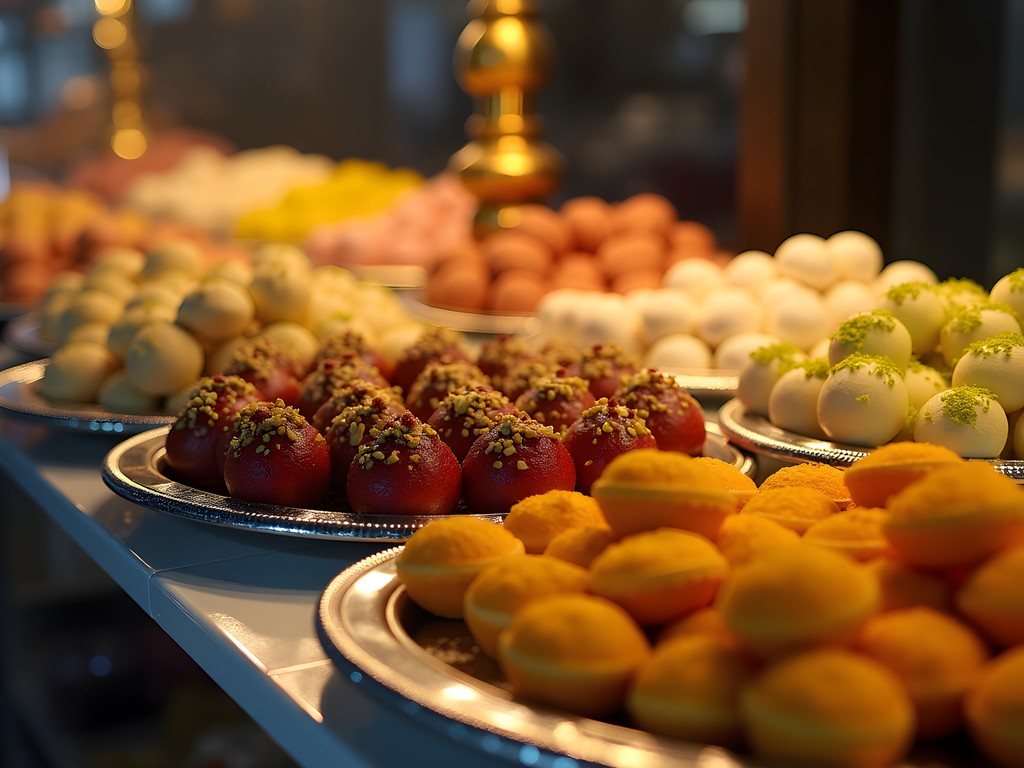
💡 Pro Tips
- Visit sweet shops in the evening when they're freshly stocked for after-dinner crowds
- Order chai with your sweets for the authentic experience—the bitter tea balances the sugar
- Ask for shirmal fresh from the oven—it's a completely different experience when warm
Beyond the Bazaar: Home Cooking and Hospitality
While street food offers an accessible entry point to Balochi cuisine, I've learned throughout my travels that the heart of any food culture beats strongest in private homes. Thanks to a connection through a textile artisan I'd interviewed for my design collective, I received an invitation that would become the highlight of my week in Quetta—a home-cooked meal with the Kakar family in their multi-generational household.
'What you eat on the street is our performance food,' explained Bibi Gul, the family matriarch, as she guided me through her kitchen preparation. 'What we eat at home is our soul food.'
The kitchen itself was a study in thoughtful design—copper pots hung from ceiling hooks, dried herbs bundled and suspended above the cooking area, and a traditional clay tandoor built into one corner. Nothing was there for decoration; every element served a purpose refined over generations.
The family's hospitality tradition began with kahwa—a green tea preparation served with almonds and cardamom—and dried mulberries offered as we sat on hand-woven floor cushions. I noticed immediately how the textiles in the home echoed the patterns I'd seen stamped into breads at the bakery, another thread in the integrated design language of Balochi culture.
The meal itself unfolded over several hours, with dishes appearing in a carefully orchestrated sequence. Unlike restaurant meals, home cooking revealed subtle flavors that rarely make it to commercial settings—wild herbs foraged from the surrounding mountains, preserved lemons used sparingly as a flavor accent, and heirloom spice blends unique to the family.
Most revealing was landhi—a preservation technique where meat is dried in the mountain air over several weeks. The resulting product, reconstituted in a fragrant broth, offered complex umami notes I'd never encountered in the street food version.
'This is food that remembers,' Bibi Gul told me as she served a rice dish studded with dried fruits and nuts. 'It carries the memory of seasons when fresh food was scarce.'
I was struck by how this approach to cooking—born of necessity in a harsh landscape—had evolved into sophisticated culinary traditions that honored both ingredients and heritage. As a designer who believes that the most beautiful objects are those that serve their purpose with integrity, I found profound inspiration in these dishes that had been refined over centuries to nourish both body and cultural identity.
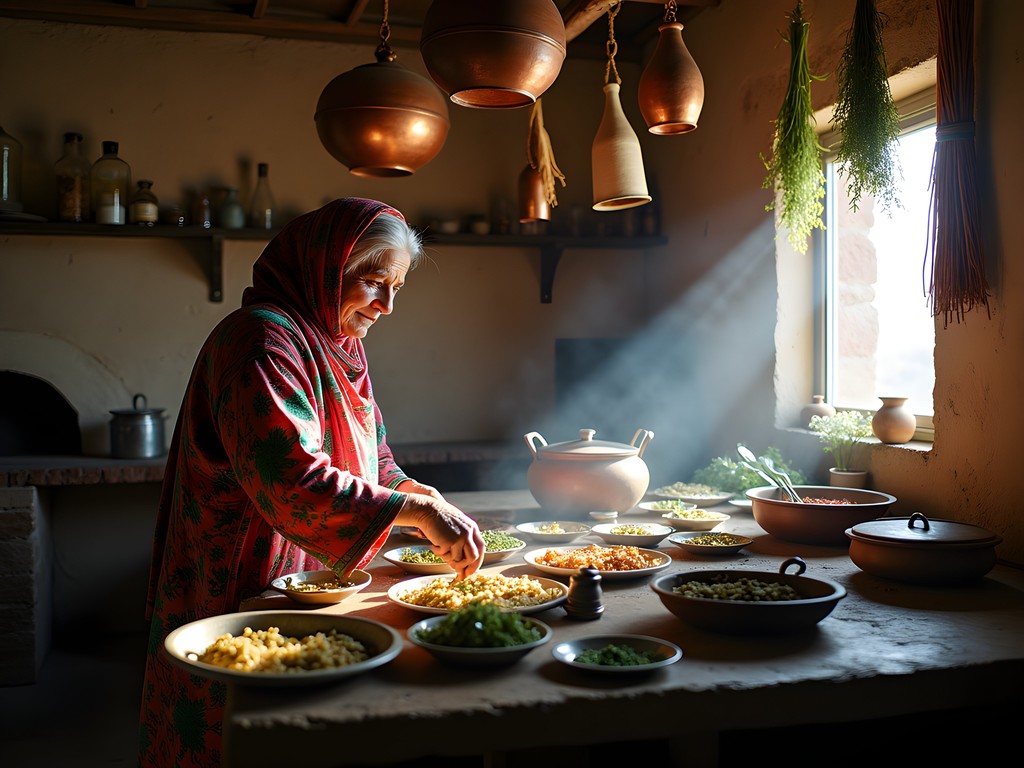
💡 Pro Tips
- Accept home invitations when they come through trusted connections—they offer culinary experiences you can't find in restaurants
- Bring a small, thoughtful gift from your home country when invited to a Pakistani home
- Ask about family recipes—many hosts are delighted to share their culinary heritage with genuinely interested travelers
Final Thoughts
As I pack my sketchbooks—now filled with drawings of teapots, bread patterns, and the weathered hands of Quetta's food artisans—I realize that my week exploring Balochistan's culinary landscape has transformed my understanding of this region far beyond what I anticipated. In each dish, I found evidence of the same principles I value as a designer: resourcefulness, respect for materials, and the seamless integration of function and beauty. The food of Quetta isn't just sustenance; it's a living museum of cultural resilience, a tangible connection to nomadic traditions, and a reminder that the most profound design solutions often emerge from the most challenging constraints. For travelers willing to venture beyond Pakistan's more familiar destinations, Quetta offers not just memorable meals but a deeper understanding of how food preserves cultural identity against the tides of modernization. As I've discovered repeatedly in my journeys, when we eat with curiosity and respect, we taste not just flavors but stories—and Balochistan's deserve to be savored.
✨ Key Takeaways
- Quetta's street food reflects centuries of cultural exchange along ancient trade routes
- The techniques and presentations of Balochi cuisine reveal sophisticated design principles born of practical necessity
- Home cooking offers deeper insights into Balochistan's culinary traditions than restaurant meals
- Food preservation methods like landhi (air-dried meat) and kaak (twice-baked bread) tell the story of adaptation to harsh environments
📋 Practical Information
Best Time to Visit
Fall (September-November) when temperatures are moderate and local produce is abundant
Budget Estimate
$30-50 per day including accommodation, food and local transport
Recommended Duration
5-7 days
Difficulty Level
Intermediate


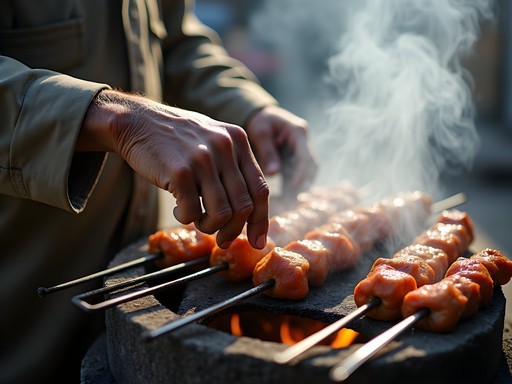
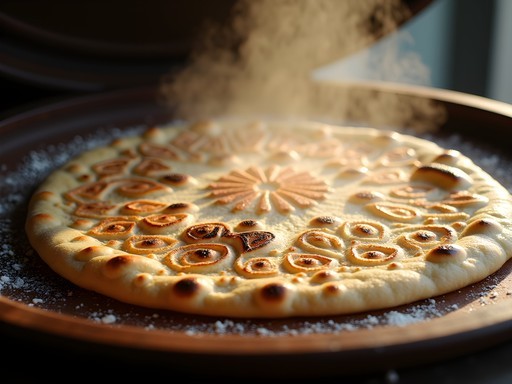
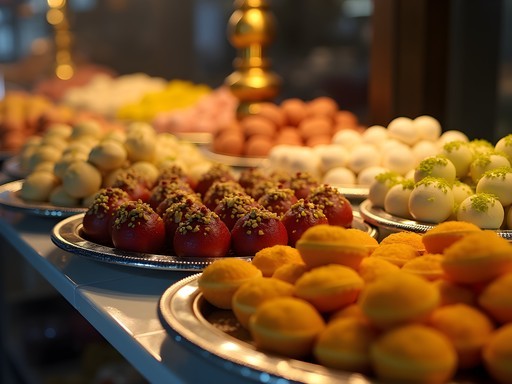
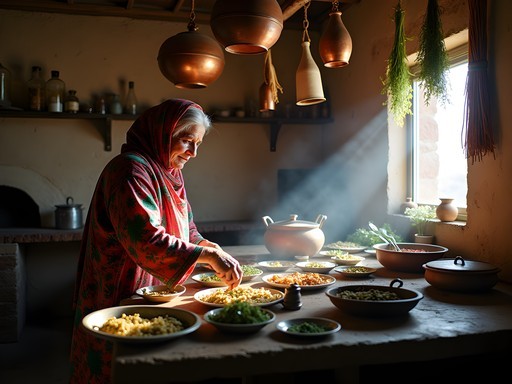


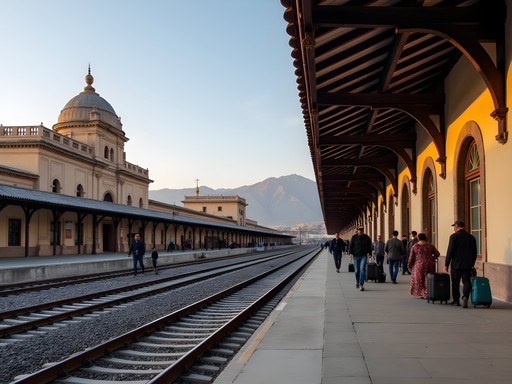
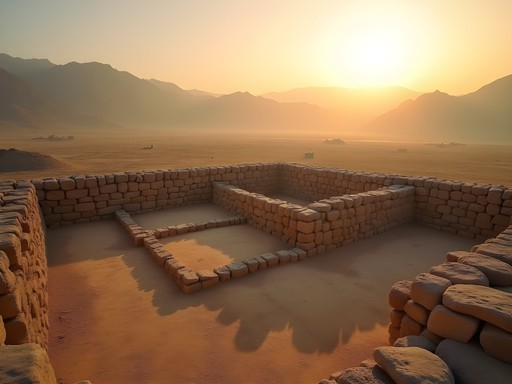




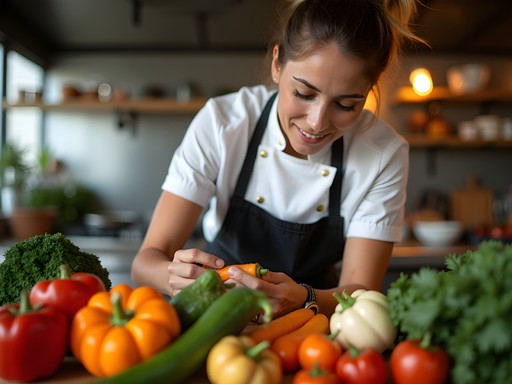

Comments
adventureone
Just got back from Pakistan (though I didn't make it to Quetta) and the food was the highlight of my trip! Those Persian-influenced desserts you mentioned remind me of the sweets I tried in Lahore. I found having a food translation card super helpful when exploring markets. Did you try the Balochi Sajji with the special spice rub? That's on my must-try list for next time!
Olivia Sanchez
Yes! The Sajji was incredible - that spice rub is something special. Definitely worth seeking out when you make it to Quetta!
tripphotographer
Your sketches of the food artisans sound amazing! Would love to see some of them in your next post. The way you described the chai culture makes me feel like I can smell it through the screen! Definitely saving this for future travel inspo!
oceanexplorer
How safe did you feel in Quetta? Considering a trip there.
Olivia Sanchez
I felt quite safe in the main areas of Quetta, especially during daytime. Just use common sense precautions and research current conditions before going. The locals were incredibly hospitable!
John Hart
I'd add that it's essential to check travel advisories before visiting Balochistan. When I went in 2023, I arranged a local guide which was invaluable for both safety and cultural insights. The food scene alone is worth the extra precautions.
roamlover
Those flatbreads look amazing! Great photos.
roamlife
Omg Olivia your descriptions are making me HUNGRY! Those cardamom-infused teas and the Balochi Dumba sound incredible. I've never considered Pakistan for a food trip but now it's definitely on my radar. How was the language barrier situation? Did you find it easy to order food without knowing the local language?
Olivia Sanchez
Thanks @roamlife! Language wasn't a huge issue in the main bazaars - many vendors know basic English phrases for tourists. I also learned a few Urdu food words which helped. When in doubt, pointing and smiling works wonders!
roamlife
That's great to know! I'm going to start learning some basic food phrases now. Can't wait to try that Sajji you mentioned!
Stephanie Romano
Olivia, this brought back so many memories! We took our kids to Pakistan last summer and Quetta was such an unexpected highlight. My 12-year-old still talks about watching the flatbread makers slap the dough against the tandoor walls. We found this amazing little family restaurant where the grandmother insisted on teaching my daughter how to properly pour the tea from height to create the foam. If anyone's planning a trip, I highly recommend Pakistan travel guide - it has some great food maps for Quetta that led us to places we never would have found otherwise. Your sketches sound wonderful - what a perfect way to capture those fleeting food moments!
Olivia Sanchez
Thank you Stephanie! I love that your daughter got a tea-pouring lesson - those small cultural exchanges are what make travel so meaningful, especially for kids. I'll have to check out that guide for my next trip!
roambuddy
I visited Quetta last year and the Sajji was LIFE-CHANGING! Did you try the version with the special red chili marinade at that tiny place near the clock tower? The owner there has been making it the same way for like 40 years. The dumba was a bit too intense for me though, haha. If anyone's heading there, don't miss the rose-flavored desserts - completely different from anything I've had elsewhere in Pakistan.
Olivia Sanchez
Yes! That's Haji's place - his sajji is legendary! I agree about the rose desserts too, especially that rice pudding with the pistachios sprinkled on top.
adventure202499
Is Sajji spicy? I'm not great with super hot food but want to try everything when I visit!
roambuddy
It varies by place! Most will make it milder if you ask. The marinade is flavorful but not necessarily spicy hot.
journeyguy17
Your description of the cardamom tea has me craving it so bad! Love how you captured all the little details of the food culture instead of just the tourist spots. Those sketches sound amazing too - any chance you'll share some of them in a future post?
Olivia Sanchez
Thank you! I'm actually planning to scan some of my sketches for next week's post - stay tuned!
adventure202499
Those flatbreads look incredible! Did you get any recipes?
tripmate42
Amazing post! How safe did you feel exploring the food stalls as a solo traveler? Planning a trip there myself but a bit nervous about Balochistan.
Olivia Sanchez
Thanks! I felt quite safe in the main bazaar areas, especially during daytime. The locals were incredibly hospitable. Just use common sense precautions like anywhere - I always let my guesthouse know where I was heading, and often had local guides show me around the less touristy spots.
tripmate42
That's reassuring, thanks for the quick reply! Did you book guides in advance or find them there?
Olivia Sanchez
My guesthouse owner connected me with most of them - definitely the way to go!
Venture X
Premium card with 2X miles, $300 travel credit, Priority Pass